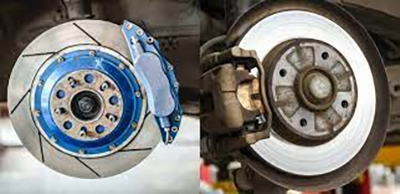
When it comes to your vehicle's braking system, it's important to understand the difference between front and rear brakes. Both play a vital role in slowing down and stopping a vehicle, but they have different functions and features that make them unique. In this article, we'll take a closer look at the differences between front and rear brakes to better understand how they work and why they're important.
The main difference between front and rear brakes is their location and the role they play in the overall braking system. Front brakes are typically larger and more powerful than rear brakes, and they are responsible for most of the stopping power. This is because during a sudden or emergency stop, the vehicle's weight shifts forward, placing more load on the front wheels. Therefore, the front brakes are designed to cope with the added weight and provide the necessary stopping power.
On the other hand, the rear brakes are smaller and less powerful compared to the front brakes. Their main purpose is to provide additional stopping power and stability during braking, especially when the vehicle is carrying heavy loads or braking on slippery roads. The rear brakes also play a vital role in preventing the rear wheels from locking up during emergency braking, which can result in loss of control and stability.

Another major difference between front and rear brakes is the type of braking mechanism used. Front brakes are usually equipped with disc brakes, which have better heat dissipation and more stable braking performance than drum brakes. Disc brakes are also less susceptible to fading, which occurs when the brakes become less effective due to overheating. Rear brakes, on the other hand, can be disc brakes or drum brakes, depending on the make and model of the vehicle. Drum brakes are generally more cost-effective and suitable for light to moderate braking, while disc brakes offer better overall performance and are more commonly used on newer vehicles.
When it comes to maintenance and wear, front brakes tend to wear out faster than rear brakes. This is because they bear the brunt of braking forces and are subject to higher levels of heat and friction. Therefore, it is important to regularly inspect and replace front brake pads and discs to ensure optimal braking performance. Rear brakes, on the other hand, generally have a longer life and require less maintenance.
In summary, the difference between front and rear brakes is their size, power and function within the vehicle's overall braking system. While the front brakes are responsible for most of the stopping power and feature more advanced disc brake technology, the rear brakes provide additional stopping power and stability and help prevent wheel locking during braking. Understanding the unique characteristics of front and rear brakes is critical to maintaining your vehicle's braking performance and ensuring driver and passenger safety.
Post time: Jan-19-2024






